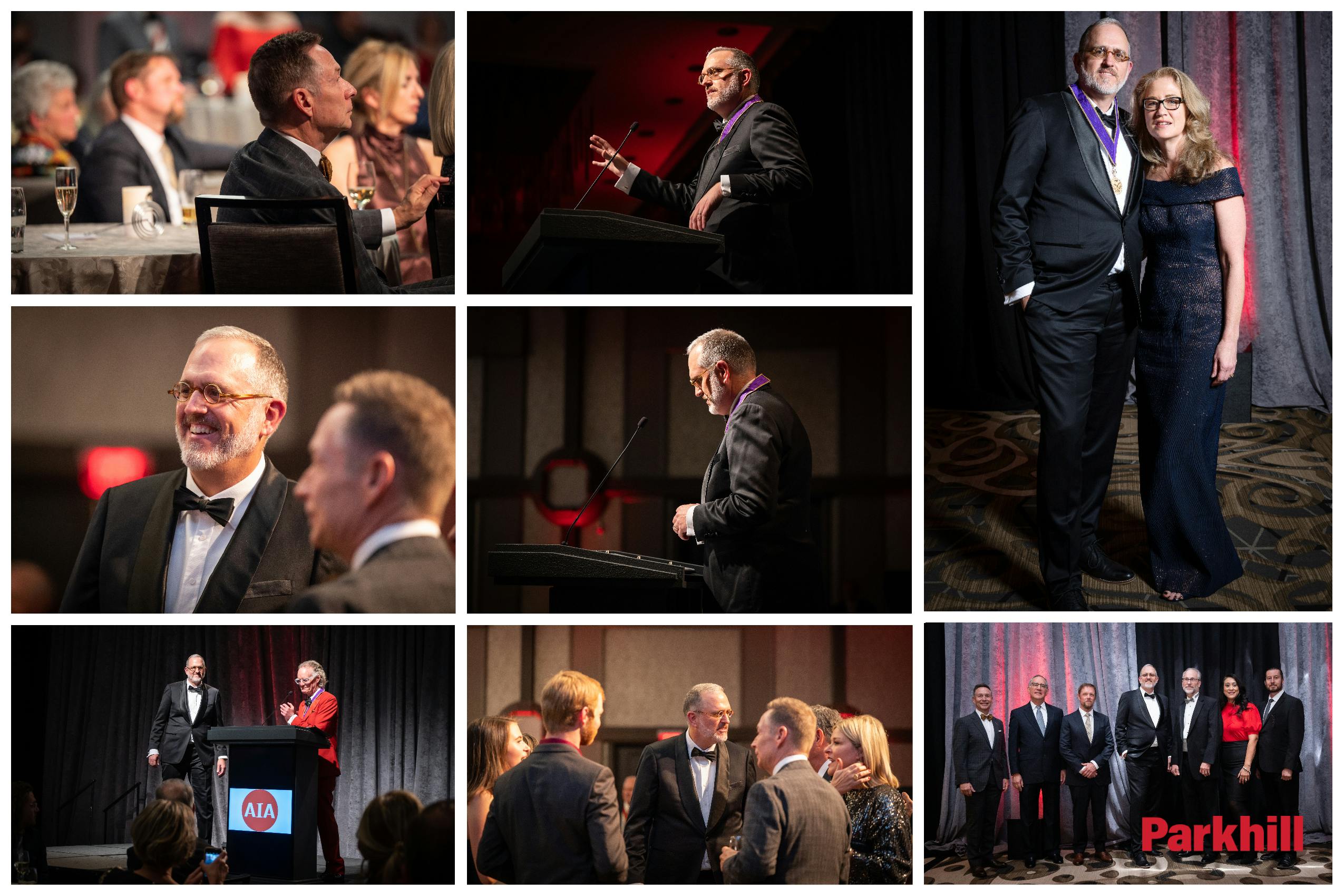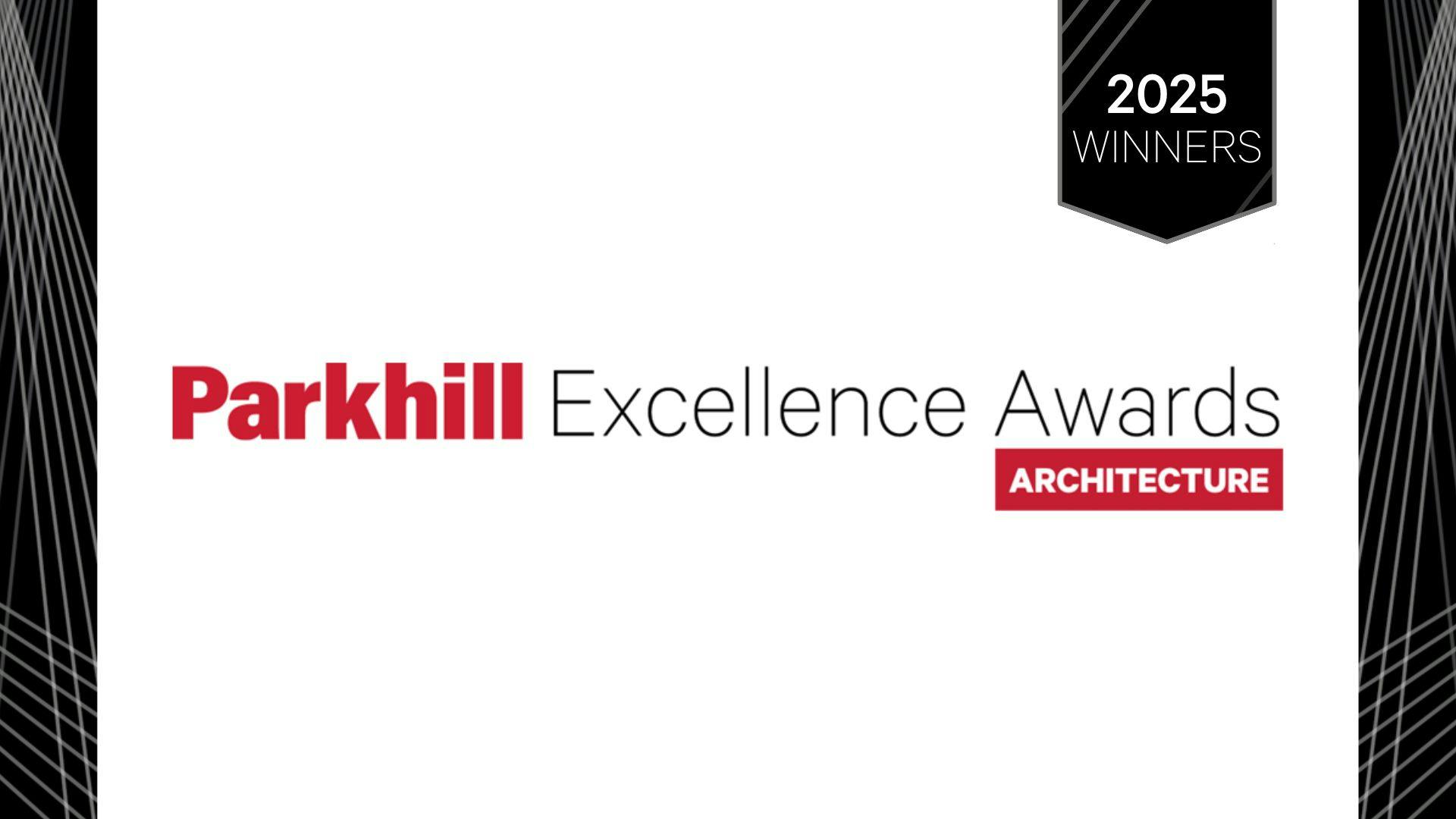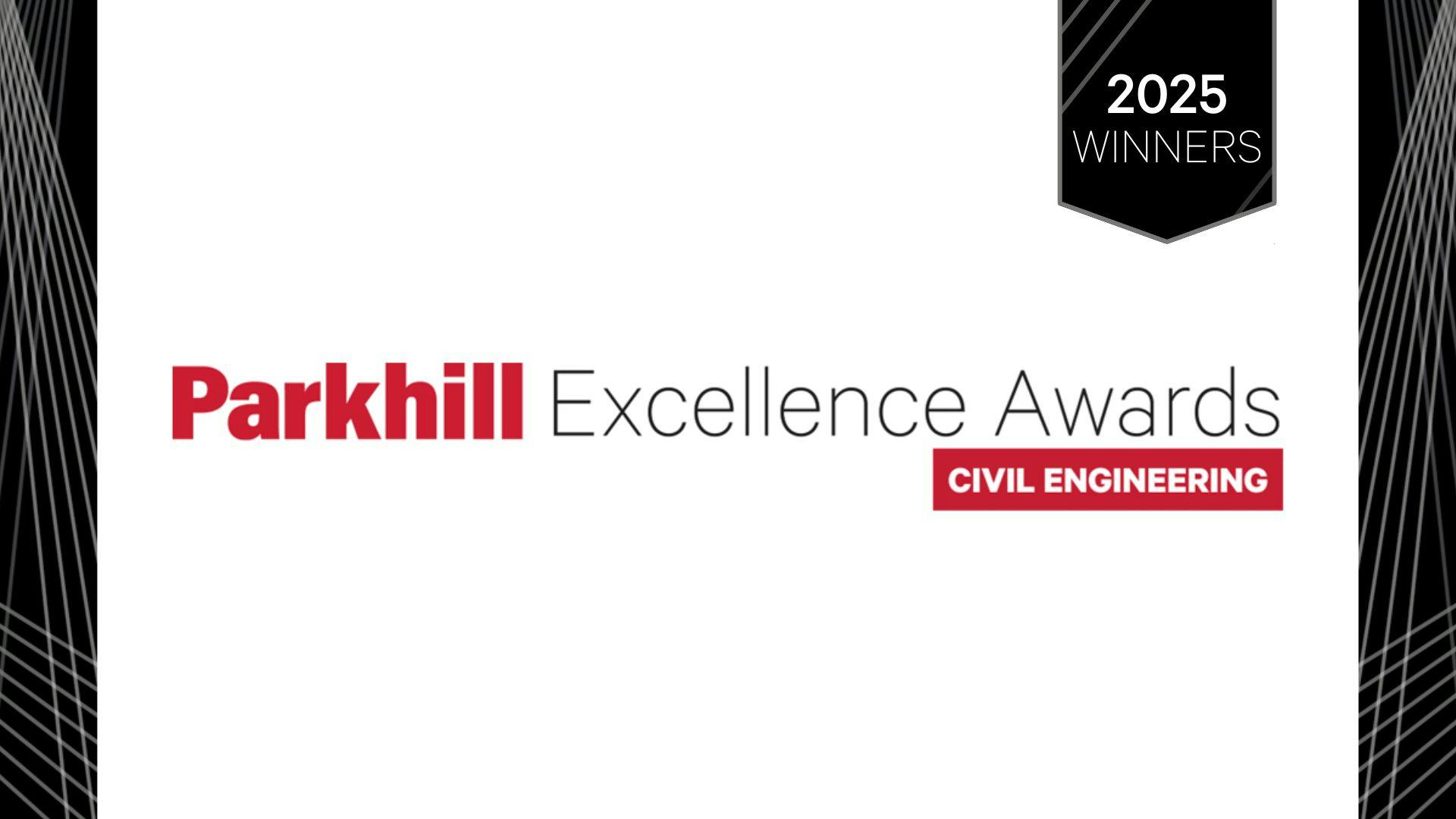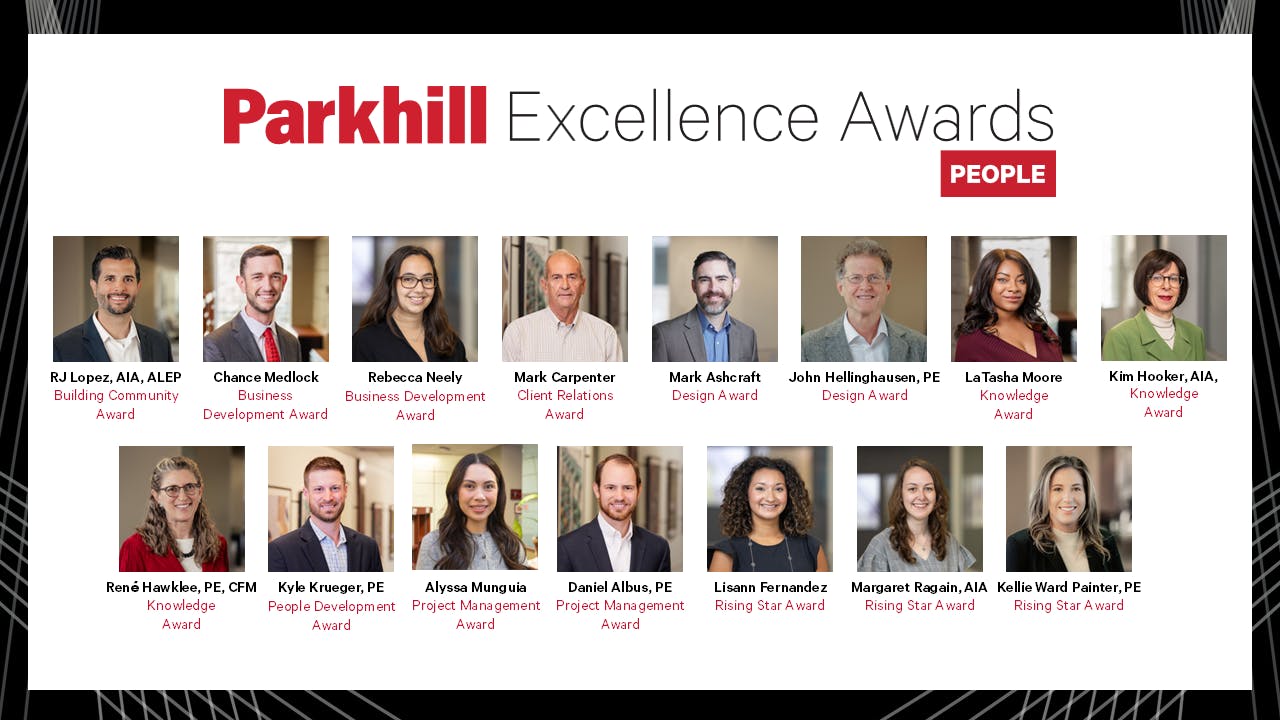Inauguration Speech by 98th AIA President Daniel Hart
Category: Building Community
Written By: Daniel S. Hart
Date: December 10, 2021

Dan Hart, FAIA, PE, is Parkhill’s Executive Vice President of Architecture. He was inaugurated as the 98th President of The American Institute of Architects on December 10 in Washington, D.C. Following is a transcript of his inauguration speech.

Beautiful...
Look at you... have you seen yourselves?
You’re beautiful!
You look great… but that’s not what I mean. I’m looking beyond that. I see what’s driving you.
Many of you are thinking: We’ve got work to do! Forty percent of carbon emissions come from buildings.
Architects have agency in addressing THE existential challenge of our day.
That HAS to be our focus!
Many others of you are thinking about how little has changed since Whitney Young Jr. called us out in 1968.
“As we move from aspiration to agency on our core dual strategies of addressing climate and justice through the built environment…we stand together. It's time to show what design can do.”
– Dan Hart, FAIA, PE, in his inaugural speech on Dec. 10, 2021
Here we are in 2021, in some ways, just now addressing justice in the built environment.
Others of you are thinking about the future of architecture education.
Or this country’s housing crisis.
Or the viability of our chapters and our firms in this time of global pandemic and economic stress.
Others of you are worried we’ve lost our way: When did AIA become an activist organization? What about design?
In a sense, you’re all right.
And we can do anything… but we can’t do everything.
What gives? We have to make choices. It’s complicated.
A number of my partners are here tonight.
I’m so grateful.
Our work at Parkhill aligned with our mission of Building Community…is complicated.
We’ve been in the trenches together. We don’t always agree, but we choose to be together anyway.
There’s something beautiful about that.
David and Mary Carol
Mike and Leslie
Kelby and Niki
Ruppert
Mary and Michael — thanks for being here.
I have family and friends here tonight.
Darwin and Robert and Ben — thank you!
Our son, Sam, and our daughter, Clara, are here.
And Jennifer, my wife, partner in life, and most favorite person in the world.
Thank you!
Those of us who do this work know how crucial it is to have people who have our backs. Let’s show them our gratitude.
Family, friends, partners, AIA. We don’t always agree on our priorities. But we choose to be together anyway. It’s complicated, but there’s beauty there, too.
That’s what I mean when I say, “You’re beautiful!”
I’m from Austin, Texas. It’s a city that shimmers on an imaginary line on the globe that stretches from the North Pole through to the South.
Historian Walter Prescott Webb says this line, the 98th Meridian, is mystical[1].
It divides the United States between forested lands and plains/mountains/deserts.
Fascinating.
It has come to be the line between East and West in the US—geographically, socially, culturally.
And so, Austin, in a sense, is a border town and has become a threshold, a complex convergence of culture and perspective.
Claudia Alta Taylor, an aspiring journalism student, crossed the 98th meridian when she landed in Austin, her plane taxiing down a runway graced by a pasture brilliant with bluebonnets.
She immediately fell in love with the place she would consider home the rest of her life.
There, she met an ambitious, young politician who proposed to her on their first date.
She was instrumental in getting him elected to Congress, and they began to split time between Austin and Washington, DC.
The qualities of a border town that she saw in Austin, she began to notice in DC as well.
She befriended planning activists, architects and others. They began to work together to cross “borders” and enhance livability throughout the city[2].
(I’m sure inspired by that field of wildflowers.)
When Claudia was a toddler, as one story goes, her caretaker remarked that she was “as pretty as a Lady Bird.”
As much as she resisted it her whole life, it was a nickname that stuck. Claudia Alta Taylor eventually became Lady Bird Johnson, then First Lady of the United States.
She knew she was so much more complex than her surface beauty. And when those who called her “Lady Bird” also said the legislation she initiated was no more than “beautification,” she knew they meant to marginalize her.
She didn’t back down.
In fact, she doubled down.
She knew beauty was her entre to environmental action. She’d say, “if the people came to love wildflowers, they’d have to eventually care about the land that grew ‘em.”
Why is it that we architects are shy talking about our work in terms of beauty?
We know that’s what we’re really trying to achieve: a simplicity, a clarity, an elegance, a gracefulness, a delight. Maybe, it’s the superficial understanding of beauty that makes us flinch.
The beauty this side of complexity is hollow, fleeting, and of little consequence.
True beauty, though, goes beyond the surface.
It requires us to navigate complexity.
It’s the beauty on the other side of complexity that signals real meaning, that suggests what we’ve created will endure.
I think that’s what Aristotle had in mind when he said the three primary pursuits in life are the good, the true, and the beautiful.
Paraphrasing Violet le Duc, you can’t have great architecture unless it is useful, safe and beautiful.
Beauty… on the other side of complexity.
I wasn’t there to hear Whitney Young Jr. at the 1968 AIA Convention in Portland.
But I’m still haunted by his challenge that when it came to justice in the built environment, we, as a profession, had most distinguished ourselves by our “thunderous silence and [our] complete irrelevance.”
I wasn’t there in Portland. Do you know who was?
Claudia “Lady Bird” Johnson was there in 1968. In fact, she took the stage after Whitney Young.
Listen to what she said to our AIA:
“So deep is the environmental crisis; so urgent is the demand for change, that architecture must become not only a profession… but a form of public service.
When so many are affected by your work, you are serving not only the client who commissions your work and pays your fee: the public is also your client.
When so many need your help, it becomes urgent that you look beyond the usual market and find new areas of service.”
(When you look at her manuscript in our archives, the phrase, “the public is also your client,” is underlined.)
Do you see it?
Climate and justice in the built environment.
Whitney Young and Claudia “Lady Bird” Johnson could have written our current strategic plan… 50 years ago!
Each in their own way, they were telling us: Relevance comes from addressing society’s wildest challenges.
And we all know: Earned relevance deepens and broadens our value. Value helps us prosper in the broadest sense.
We can do well even as we do good.
In other words, we can “drive positive change through the power of design.”
We know how to engage seemingly divergent priorities and ideas and we question and listen and draw and break it down and shape and synthesize and draw some more until it all converges… on beauty.
We do it every day.
We call it design… and it is our superpower.
Has there ever been a moment when the world more needed THAT, needed US?
Design is our superpower.
Imaginary lines are our medium.
Think of the power and responsibility: The way we position a line can make the difference between dividing people or drawing them together.
It can mean the difference in a building that touches the earth lightly, regeneratively, or a building that consumes.
Every one of our towns, like Austin, like Washington, DC, is a border town of its own kind.
Your community needs architects… needs you right now to find beauty beyond the complexity.
We, all of us, need to know that deep in our bones.
I see it. I’m “spectacularly optimistic”:
I’ve seen what we can do when we’re focused and aligned.
As I consider this moment in AIA’s deep history and the complexity that all of us together represent, I see beauty on the other side.
I am influenced by living on the 98th Meridian even as I am standing before you on another imaginary line, the 98th presidency in AIA’s history.
We are at a threshold.
This is a pivotal moment.
As we emerge from a global pandemic;
as we welcome Lakisha Woods with great anticipation and say a heartfelt, gratitude-filled goodbye to Robert Ivy and all those CEOs and presidents who have come before;
as we embark on imbuing what we value into our headquarters building in its first major renovation in 50 years;
and, as we move from aspiration to agency on our core dual strategies of addressing climate and justice through the built environment…we stand together.
it’s time… to show… what design can do.
Are you in?
Are you willing to double down?
Let’s. Make it. Beautiful!


